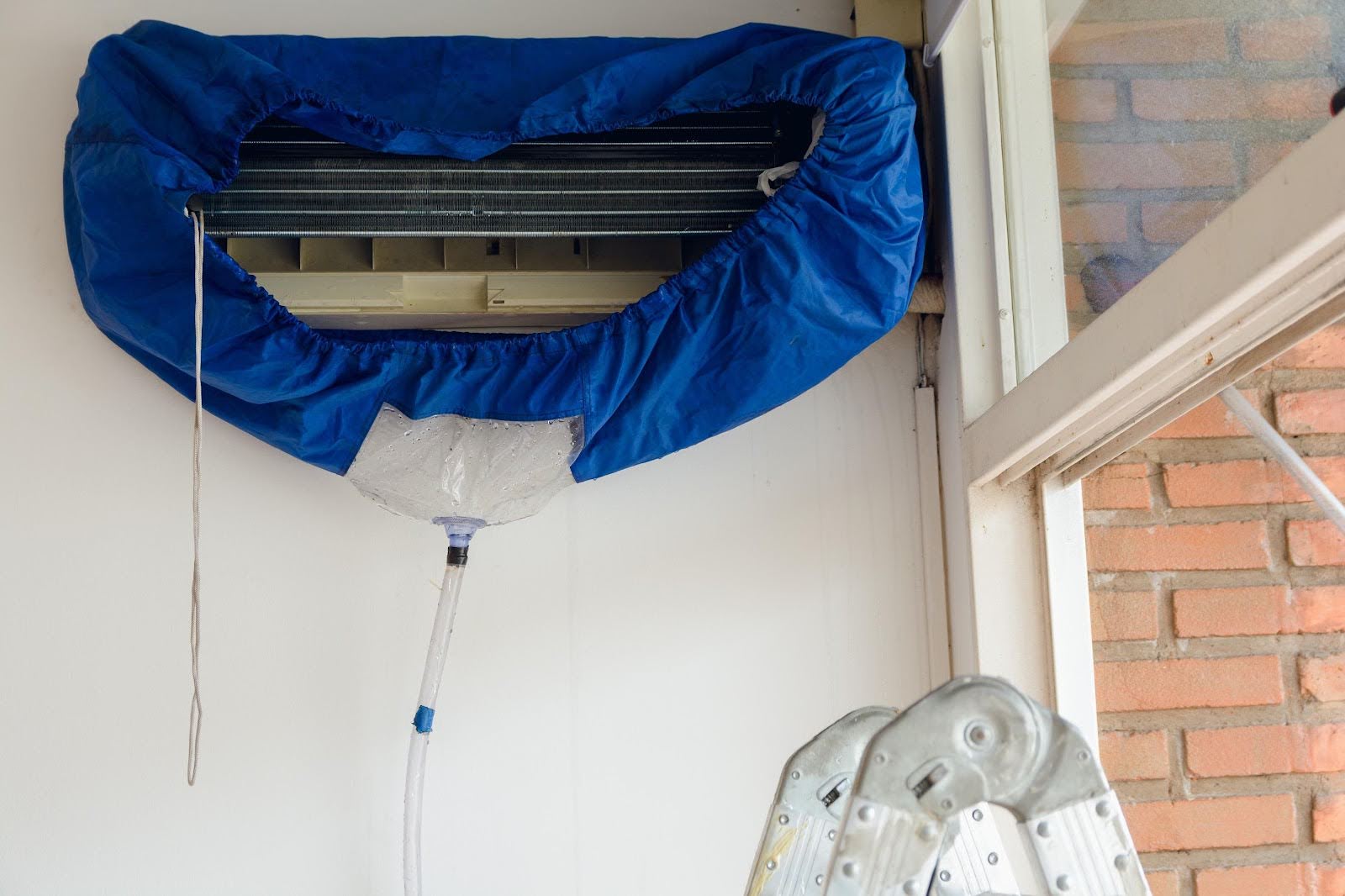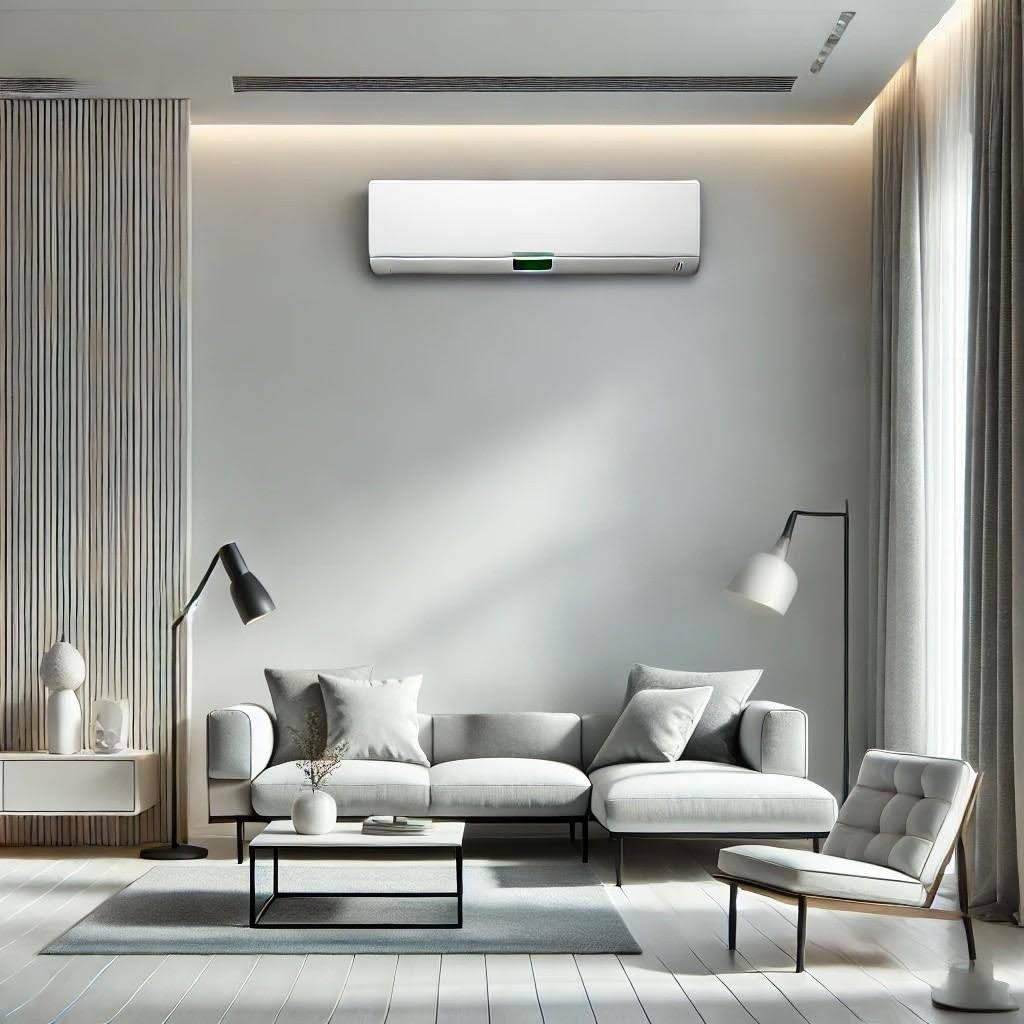No products in the cart.
Many people hesitate to renovate historic or older homes because the thought of installing a conventional central HVAC system is daunting. Between fragile walls, limited attic or basement space, and potential landmark restrictions, updating the heating and cooling can feel impossible. Enter mini splits: these ductless systems offer modern climate control without compromising your home’s character or structural integrity. In this post, we’ll dive into why mini splits are an excellent choice for historic and hard-to-retrofit homes, how they preserve architectural details, and practical considerations for installation.
1. Why Traditional HVAC Is a Challenge in Older Homes
- Limited Ductwork Options: Many older properties lack the space to accommodate new ducts or have historical covenants preventing major structural alterations. Installing ducts in these homes is often impractical, leading homeowners to feel stuck with outdated, inefficient heating and cooling solutions.
- Fragile Building Materials: Old homes often feature delicate materials like plaster walls, ornate ceilings, and vintage woodwork. Tearing into these to add ducts can be risky and expensive. The damage caused may even decrease the home’s value, especially in historic properties.
- Historic Preservation Rules: Homes listed on the national or local historic registers come with strict preservation rules. Many jurisdictions don’t allow visible alterations to the property’s exterior or interior. Large HVAC vents, duct runs, and even window or door modifications may be prohibited under these guidelines.
- Mini Split Advantage: Ductless systems require only small holes to install refrigerant lines, making them minimally invasive. This makes them a much more viable option for preserving both the interior and exterior aesthetic of historic homes. Whether you’re renovating a vintage Victorian or an old colonial, mini splits allow for climate control without compromising the home’s charm.
For more on why ductless systems are the perfect fit for older homes, check out our Why Choose a Ductless Mini Split System?.
2. How Mini Splits Preserve Your Home’s Character
- Minimal Aesthetic Impact: Indoor air handlers are compact and can be placed high on walls or even recessed into ceilings.
- No Obtrusive Ducting: Eliminate the need for large vents, drop ceilings, or bulkheads that could clash with period architecture.
- Design Flexibility: Many mini split manufacturers now offer sleek, discreet indoor units that blend with a variety of interior décor styles.
Pro Tip: Some brands even carry recessed cassette units or floor-mounted consoles that discreetly tuck away in corners, ideal for older homes with unique layouts. If you’re interested in floor-mounted mini splits or other stylish units, explore our selection of Floor-Mount Mini Splits and Ceiling Cassette Mini Splits.
3. Energy Efficiency Gains in Hard-to-Retrofit Properties
Many historic homes have outdated insulation, single-pane windows, or drafty doors. That’s where mini splits truly shine:
1. Targeted Zoning
- Heat or cool the exact rooms you use most. This zoned approach significantly reduces energy waste compared to conditioning an entire house.
2. High SEER & HSPF Ratings
- Modern ductless heat pumps boast impressive Seasonal Energy Efficiency Ratios (SEER) and Heating Seasonal Performance Factors (HSPF). Translation? You get more heating and cooling output for less electricity consumed.
3. Reduced Air Leakage
Ductwork can lead to leakage, especially in older homes with poorly sealed ducts. No ducts = no duct leakage losses.
For more tips on improving energy efficiency, check out our Simple Tips to Save on Air Conditioning Costs with Your Ductless Mini Split System.
4. Installation Highlights for Older Homes
Assess Electrical Capacity
- Some older properties may have lower amperage electrical panels.
- Ensure you have enough amperage or plan for an upgrade if needed.
Plan the Condenser Placement
- Place outdoor units in a discreet location to maintain curb appeal and meet local historic district guidelines. A side yard or hidden corner of the backyard typically works best.
Mind the Building Codes
- Always verify local regulations, especially in historic districts. Confirm that any changes to exterior walls (for piping) are permissible.
Pro Tip: Work with an HVAC contractor experienced in retrofitting older homes. They’ll know the best ways to run linesets without impacting your home’s structural elements or aesthetic appeal.
5. Preserving Indoor Air Quality in Older Dwellings
Old homes are notorious for musty basements, hidden mold in walls, and dust in attics. A ductless system can help mitigate these issues:
No Dust-Building Ducts
- Ductwork can be a breeding ground for dust and allergens. Mini splits rely on direct airflow from the wall unit, reducing buildup.
Built-In Filtration
- Many mini splits come with multi-stage filtration systems that capture allergens, pollen, and even mild odors, improving indoor air quality.
Humidity Control
- Heat pumps can help regulate humidity levels, a huge plus if your property tends to be damp or humid in certain seasons.
6. Potential Incentives & Rebates
If your system meets certain efficiency thresholds (such as ENERGY STAR® ratings), you might qualify for:
Federal Tax Credits
- Extended credits under energy efficiency programs can offset a portion of the purchase and installation.
State and Utility Rebates
- Many states, municipalities, and even utility companies offer rebates to encourage energy-efficient upgrades, particularly beneficial for older homes that can see major efficiency improvements.
Historic Preservation Grants
- While not always applicable to HVAC specifically, some historic preservation grants or loans allow funds to go toward upgrades that help sustain the property’s future.
Check your local guidelines or talk with your contractor to see if you qualify.
7. Frequently Asked Questions
Q: Will installing mini splits damage my plaster walls or ornate ceilings?
A: Installation is minimally invasive. Technicians only need to drill small holes (roughly 2–3 inches in diameter) for the refrigerant lines and wiring. Carefully chosen placement can preserve your plaster, molding, or ornamental details.
Q: Can I heat my entire older home with a multi-zone mini split setup?
A: Generally, yes! Multi-zone configurations allow multiple indoor units to connect to one outdoor condenser. You can install different units in each room or zone, controlling temperatures independently.
Q: Are mini splits noisy?
A: Most modern systems run very quietly, both indoors and out. The condenser’s low decibel level is perfect for neighborhoods with noise restrictions or close-set houses.
8. Final Thoughts: Modern Comfort Meets Timeless Charm
Your older or historically significant home doesn’t have to remain stuck in the past when it comes to climate control. Mini splits offer an ideal, unobtrusive way to maintain the architectural integrity you love, while enjoying modern, energy-efficient heating and cooling. With minimal structural changes required, potential energy rebates available, and improved air quality benefits, ductless systems truly check all the boxes for preserving both comfort and character in older homes.
Need Help Upgrading Your Home’s HVAC System?
If you’re ready to embrace modern comfort without compromising your home’s historic charm, contact our team at Payless Mini Split. We’ll connect you with an experienced technician who can guide you through model selection, custom installation strategies, and any available rebates, making it easier than ever to keep your older home cozy (and energy-efficient) year-round!
Further Reading & Resources
- National Trust for Historic Preservation, Tips on maintaining and updating heritage homes.
- Energy.gov, Guidelines on maximizing energy efficiency in older buildings.
- Database of State Incentives of Renewables & Efficiency (DSIRE), Find out if your region offers additional rebates.
Always consult local regulations and historic district guidelines before making changes to the exterior or interior of a registered historic home.






